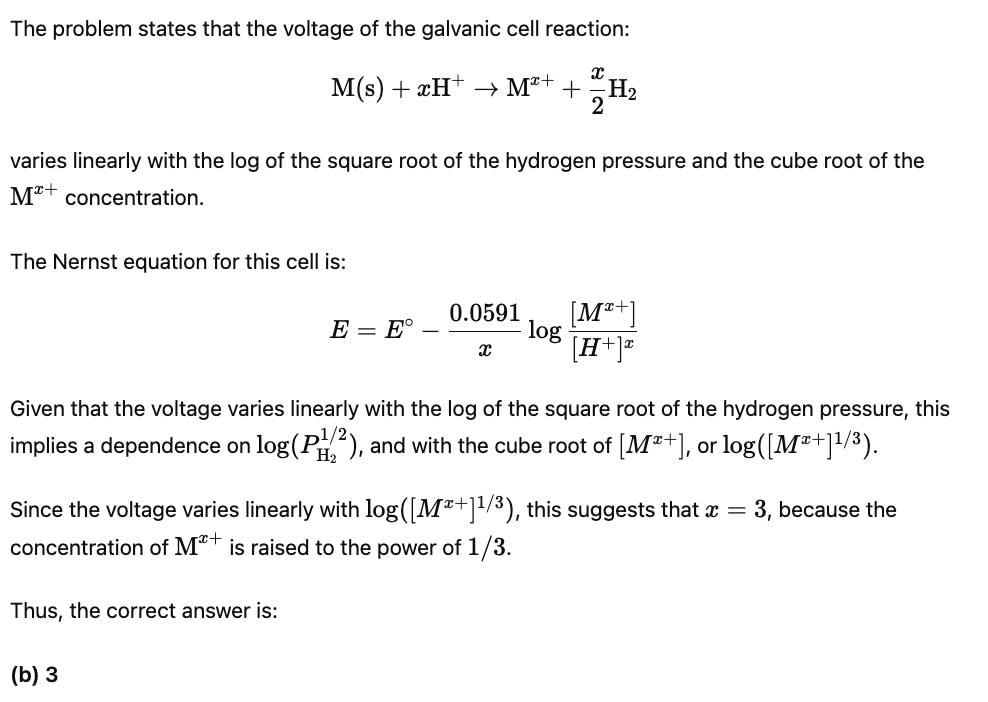HSSC TGT Science Mock Test - 6 - HSSC PGT/TGT MCQ
30 Questions MCQ Test - HSSC TGT Science Mock Test - 6
There are some children with physical disabilities in a teacher's class. Which of the following would be most appropriate for them to say?
Which of the following utilises the least amount of electricity?
High value of BOD in a water stream indicates which of the following?
If cells are joined in parallel, they have _______.
Manganin and constantan have a low temperature coefficient of resistivity which means that
What is the primary pigment responsible for the red color in most red algae?
How many atoms in total are present in 1 kg of sugar?
It is observed that the voltage of a galvanic cell using the reaction M(s) + xH+→ Mx+ + X/2H2 varies linearly with the log of the square root of the hydrogen pressure and the cube root of the Mx+ concentration. The value of x is
Pteridophytes differ from mosses/ bryophytes in possessing
Asexual spores in Ascomycetes are called as _______
Which is correct increasing order of their tendency of the given elements to form M3- ion?
Sulphur (2.56 g) is burned in a constant volume calorimeter with excess O2(g). The temperature increases from 21.25°C to 26.72°C . The bomb has a heat capacity of 923 JK-1. Calorimeter contains 815 g of water. Thus, change in internal energy per mole of SO2 formed for the reaction is
(specific heat of water is 4.184 JK-1g-1.)
Mangoes do not and cannot grow in temperate regions. The most important environmental factor responsible for it is



















